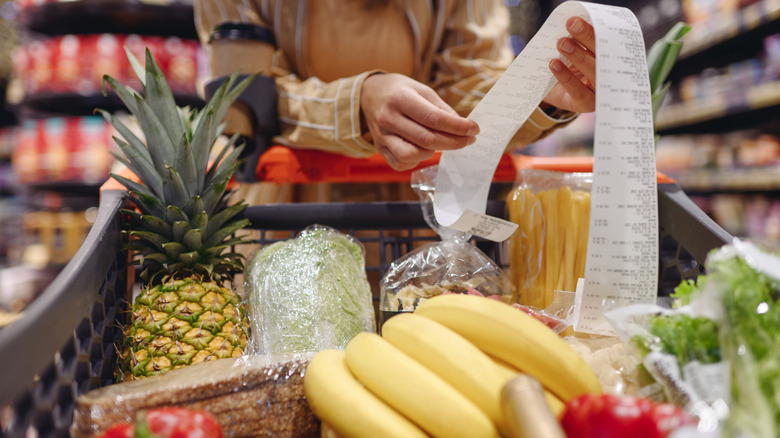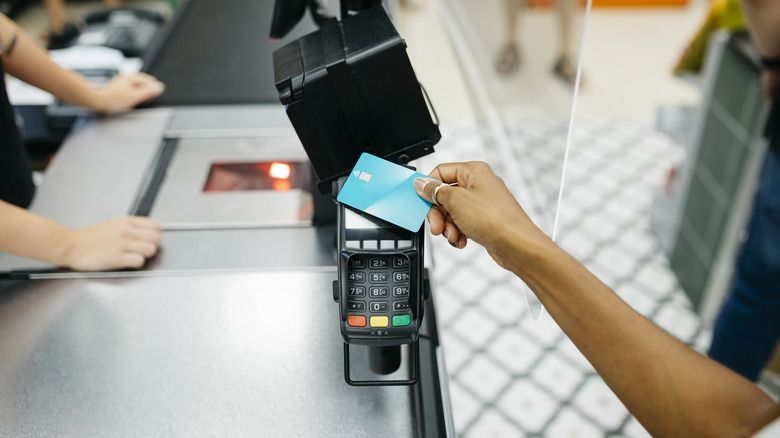The States Whose Wallets Are Being Hit Hardest By High Grocery Prices
Nationwide, Americans have felt a particular financial pinch at the grocery store, with food prices climbing an astonishing 31% over the past six years. This increase has primarily been driven by persistent supply chain issues like the ongoing bird flu egg shortage as well as higher labor costs — and incredible corporate profit margins. But much the same way that some states feel the egg price hike differently than others, the broader grocery pain is also unevenly diffused.
WalletHub released the results of a study examining the average cost of groceries in all 50 states as a percentage of each state's median monthly household income. The results shine a light on the people being hit hardest by high grocery prices, and they're concentrated in states that already have a hard go of it.
According to the study, Mississippi leads this most expensive list, with grocery costs accounting for 2.64% of the median household income. Next is West Virginia at 2.57% of median household income, followed by Arkansas at 2.49% and Kentucky at 2.41%. Louisiana rounds out the top five at 2.39% of median monthly household income spent on groceries. However, these numbers do not simply tell a tale of high prices. The full story is more complicated.
Why do these states spend so much on groceries?
As WalletHub acknowledges, despite Mississippians spending more of their money on groceries than residents of other states, Mississippi actually has the ninth-cheapest grocery prices in the nation. The reason for this apparent dichotomy is low average incomes, and a similar truth plays out among other states on this list.
West Virginia, Arkansas, Kentucky, and Louisiana all have lower average household incomes compared to other states. The top five states where people spend the most on groceries are also the bottom five states by median household income (per U.S. News), albeit in a slightly different order. The reverse is true of the bottom of WalletHub's list. The states that spend the least on groceries as a percentage of median household income (New Jersey, Maryland, and Massachusetts) are also the top three states by median household income.
As food items, including grocery staples, are expected to get even more expensive, the relatively good news for these hardest-hit states is that, sometimes, they're among the least expensive places to shop. Despite Arkansas' third place ranking on this list, some specific groceries are unusually affordable there, including chicken, sausage, and frozen foods (though some things like lobster and mushrooms should never be bought frozen). It's just not enough to fully overcome the impact of lower median incomes.

